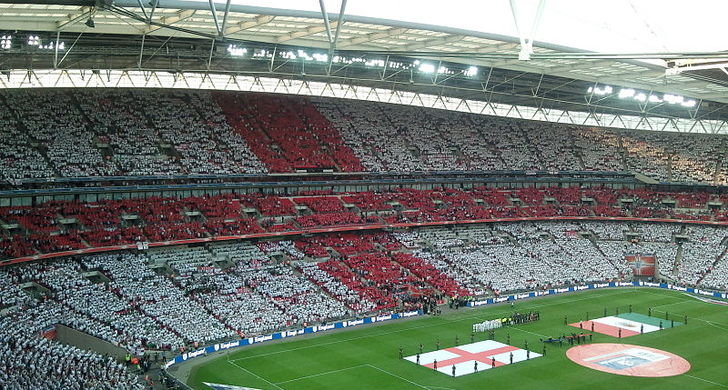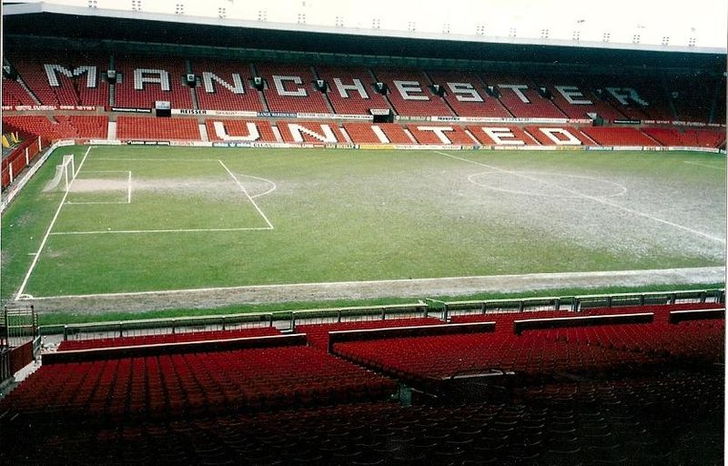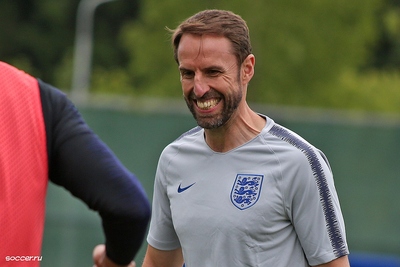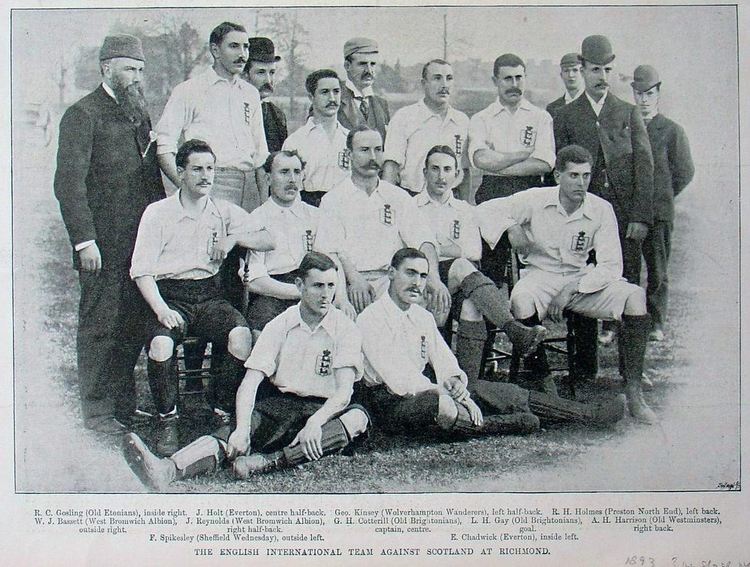
For many non-English people there is a sense that England is one of the most arrogant footballing nations in the world. Just one major trophy since football began, despite being the nation that essentially invented the game as we know it today, is a pretty poor return on investment. Add that to perennial underachievement during every major competition but a national press who act as though it’s the Three Lions’ right to win a cup every time the team play, and you can see why the likes of the Germans, Brazilians and Argentinians think the English approach the game with arrogance at their forefront.
Yet Englishmen would say it’s nothing to do with arrogance. It’s about a constant hope that the seemingly impossible can become possible. It’s a belief in ability based on the success of the Premier League, the country’s top-flight division, as well as English clubs’ success against the odds in European competition. England supporters feel that every year may be their year because they don’t see the point in accepting defeat before a ball has been kicked or acknowledging mediocrity as a constant state of affairs.
In this section of the website we’ll be telling you all about England; not only as a national side but also the various divisions within the league set-up and the sorts of stadiums you’ll find if you go to watch football in the land of crumpets, Beefeaters and Her Majesty The Queen.
English Stadiums

The stadiums you’ll find in England are hugely varied to say the least. There are huge stadiums such as Old Trafford with one of the largest capacities in Europe as well as small grounds that only have three stands and tend to welcome less than a thousand spectators on a regular basis.
In the wake of the Hillsborough Disaster it was decreed that stadiums in the top two divisions of English football should be all-seated venues, meaning that the previously popular terraced sections where fans would stand and ‘find their own level’ were banned. This has made the stadiums amongst the safest in the world, though some would argue that it has also seen a decrease in the atmosphere at the grounds.
The majority of grounds are built in the ‘English Style’ of having four separate and distinct stands on each edge of the pitch. Newer stadiums tend to be built in the more ‘Continental Style’ of having a bowl design of continuous seating running around the pitch, however.
- Abbey Stadium
- Adams Park
- Aggborough Stadium
- Alexandra Stadium
- Anfield
- Arbour Park
- Ashton Gate
- Bet365 Stadium
- Beveree Stadium
- Blackwell Meadows
- Bloomfield Road
- Bloomfields
- Blundell Park
- Bob Lucas Stadium
- Bootham Crescent
- Boston Community Stadium
- Boundary Park
- Bramall Lane
- Brick Community Stadium
- Brisbane Road
- Broadfield Stadium
- Broadhall Way
- Brunton Park
- Cantilever Park
- Carrow Road
- Cherrywood Road
- Clarence Park
- Community Stadium
- Court Place Farm
- Coventry Building Society Arena
- Craven Cottage
- Cressing Road
- Croft Park
- Crown Ground
- Dales Lane
- Damson Park
- Deepdale
- Deva Stadium
- Eco-Power Stadium
- Edgar Street
- Edgeley Park
- Elland Road
- EnviroVent Stadium (Wetherby Road)
- Ewood Park
- Falmer Stadium
- Field Mill One Call Stadium
- Fratton Park
- Gallagher Stadium
- Gander Green Lane
- Gateshead International Stadium
- Gigg Lane
- Glanford Park
- Goodison Park
- Griffin Park
- Grosvenor Vale
- Haig Avenue
- Hardenhuish Park
- Hayes Lane
- Highbury Stadium
- Hillsborough
- Holker Street
- Home Park
- Hornchurch Stadium
- Huish Park
- J Davidson Stadium
- JobServe Community Stadium
- John Smiths Stadium
- Kassam Stadium
- Kenilworth Road
- King Power Stadium
- Kingfield Stadium
- Kingsmeadow
- Lincoln Road
- Loftus Road
- London Stadium
- Longmead Stadium
- Madejski Stadium
- Mariners Park
- Mazuma Mobile Stadium
- Meadow Lane
- Meadow Park
- Meadow Park Gloucester
- Meadowbank
- Melbourne Community Stadium
- Memorial Stadium
- Mill Farm
- Molineux
- Moss Rose
- New Meadow
- New Windmill Ground
- New York Stadium
- North Street
- Oakwell Stadium
- Old Trafford
- Park View Road
- Parkside
- Peninsula Stadium (Moor Lane)
- Pirelli Stadium
- Plainmoor
- Plough Lane
- Portman Road
- Poundland Bescot Stadium
- Prenton Park
- Pride Park
- Priestfield Stadium
- Princes Park
- Priory Lane
- Queen Elizabeth II Stadium
- Raymond McEnhill Stadium
- Recreation Ground
- Riverside Stadium
- Roots Hall
- Rossett Park
- Scarborough Sports Village
- Selhurst Park
- Silverlake
- Sincil Bank
- Sixfields Stadium
- SMH Group Stadium
- Spencer Stadium
- Spotland Stadium
- St Andrew’s
- St James Park
- St James Park Brackley
- St James' Park
- St Mary’s
- Stadium MK
- Stainton Park
- Stamford Bridge
- Stonebridge Road
- Tameside Stadium
- The Boleyn
- The Brewery Field
- The Citadel
- The City Ground
- The County Ground
- The Den
- The Emirates
- The Etihad
- The Hawthorns
- The Hive Stadium
- The Lamb Ground
- The Meadow
- The MKM Stadium
- The New Lawn Stadium
- The Shay
- The Silverlands
- The Stadium Of Light
- The Valley
- The Walks
- Tottenham Hotspur Stadium
- Toughsheet Community Stadium
- Truro Sports Club
- Turf Moor
- Twerton Park
- Vale Park
- Valley Parade
- Vauxhall Road
- Vicarage Road
- Victoria Park
- Victoria Road
- Victory Park
- Villa Park
- Vitality Stadium
- Wembley
- Weston Homes London Road
- Whaddon Road
- White Hart Lane
- Woodside Road
- Woodspring Stadium
- Wordsworth Drive
- York Community Stadium
- York Road
English Leagues

There are 72 teams from England and Wales playing football across three divisions of England’s Football League, with a further twenty competing in the break-away division known as the Premier League. The English Football League System as a whole actually has over 140 individual leagues with a further 480 divisions plus within them. That equates to more than 5000 teams competing at any one time, though it is mainly the top 92 that we are concerned with.
The bottom three teams of the twenty clubs in the Premier League are relegated each season to the Championship, the second-tier of English football. Three teams are promoted from the Championship to take their place which ensures there are always twenty teams competing in the Premier League. Similar promotion and relegation procedures occur between each of the leagues, with the Championship, League One and League Two all having twenty-four teams playing games against each other every season.
England National Team

As we suggested at the start, England’s performances on the international stage have generally been quite under-whelming with the exception of that World Cup win in 1966.The Football Association of England are responsible for the appointment of the England manager and they have tried numerous different tactics over the years to return the country to the pinnacle of world football. They have appointed foreign managers, such as Sven Goran Eriksson and Fabio Capello, with little difference to the way the team has performed in major tournaments.
Gareth Southgate gave the country a brief moment of genuine hope in 2018 when he got the national team to the semi finals of the World Cup for the first time since 1990, but the country’s hopes were dashed by an extra time winner from Croatia. At least they didn’t go out on penalties…
The England side had no set home for its games when it was formed in 1872, playing games wherever they could for the first fifty plus years of the national side’s existence. When Wembley Stadium opened in 1923 it became the home of the England team and they have played there ever since. That is with the exception of the period from 2000 until 2007 when the old Wembley was knocked down to make way for the new Wembley that exists today. During that time the team played throughout the country.
Key Stats
| England National Team Statistics | |
|---|---|
| Year Formed | 1872 |
| Home Stadium | Wembley |
| Stadium Capacity | 90,000 |
| Major Honours | World Cup (1966) |
| Current Manager | Gareth Southgate |
| Top Scorer | Wayne Rooney (53) |
| Most Caps | Peter Shilton (125) |
| Best Performance at World Cup | Winners (1966) |
| Best Performance at European Championships | Semi-Finalists (1968, 1966) |
| Kit Colours | White (Home), Red (Away) |
History Of Football In England
Football is huge in England. It is considered to be ‘the national game’ in spite of the fact that both the rugby and cricket teams have enjoyed significantly more success on an international scale than their footballing counterparts. All of the members of the 1966 World Cup winning squad were awarded MBEs, for example, which shows how much stock is put in the country’s footballing success.
The Premier League, which is the top division in England, is considered to be one of the best leagues in the entire world in terms of competitiveness and the ability of the players within it. This is in no small part due to the amount of money available to the teams in the league thanks to television deals, sponsorship and so on. They have traditionally been able to pay the highest wages and so the best players naturally gravitate towards English clubs.

The English Football Association, formed in 1863, is the governing body of the game and is responsible for pretty much every aspect of both the amateur and professional side of the game within England and the Crown dependencies, such as Jersey, Guernsey and The Isle Of Man. They are not responsible for the Welsh game, but Welsh clubs do compete in English competitions such as the league, FA Cup and League Cup.
England’s FA is the oldest in the world having essentially been the ones who decided upon the rules of the game as we understand them today when the association was formed in 1863. The country’s national football team is also the joint-oldest in the world, being formed in 1872 at the same time as Scotland’s, against whom they played their first match.
The country’s Football League was established in 1888 and expanded throughout the 1890s. The current structure, including the advent of the Premier League, began in earnest in 1992 when the top 22 clubs in the English Football League resigned from it en masse in order to create a new top-flight. It was created in order to take advantage of the new television money floating around the game and has since gone on to be one of the richest leagues in the entire world. In the 2014-2015 season the clubs in the Premier League shared approximately £1.6 billion worth of television money between them.
